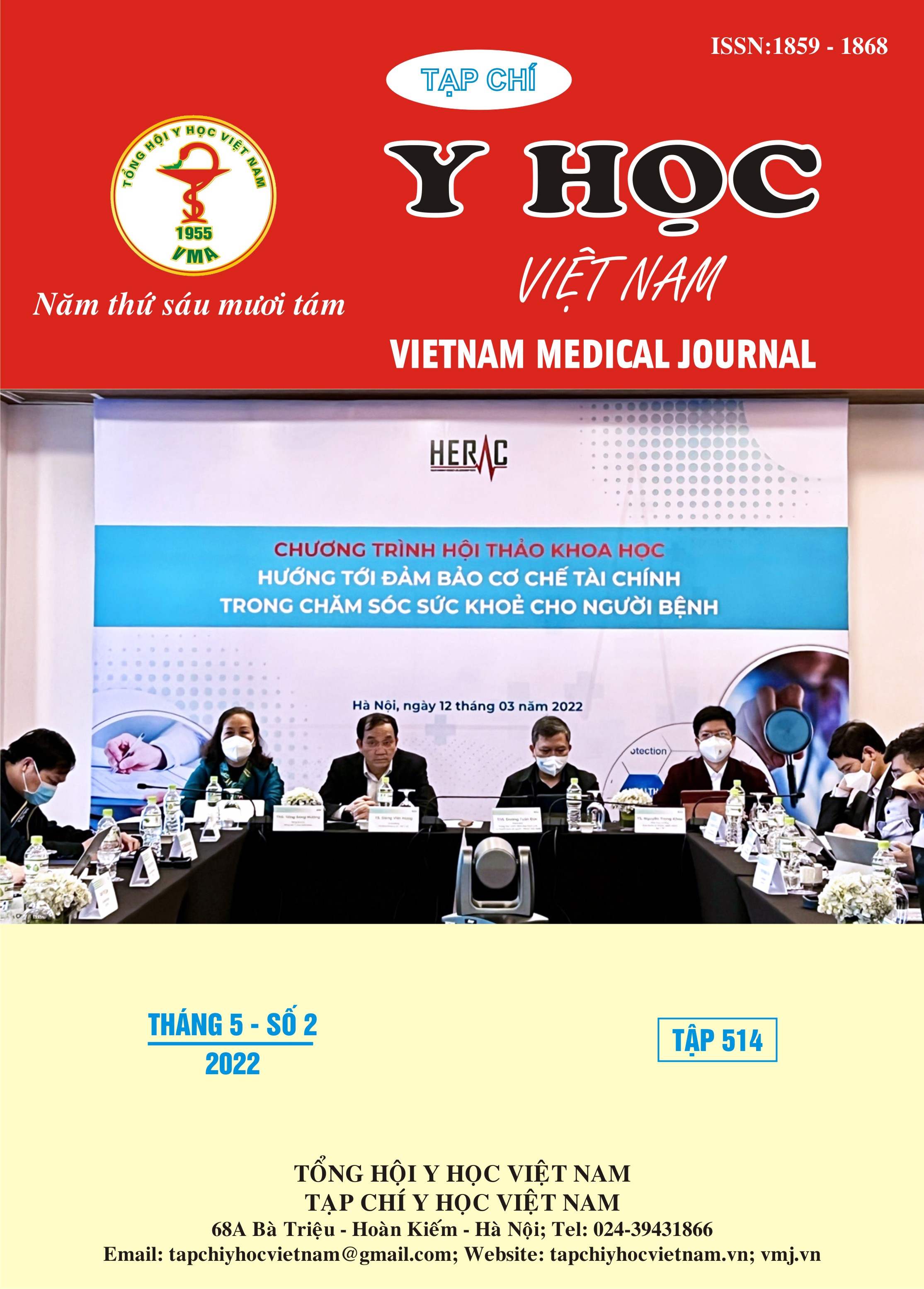TO COMPARE THE PAIN RELIEF EFFECTIVENESS AFTER PEDIATRIC INFRAABDOMINAL SURGERY BY 3MCG/KG MORPHININTRATHECAL INJECTION WITH 30MCG/KG MORPHIN INTRASACRAL SPACEINJECTION
Main Article Content
Abstract
Cotrol pain relief after pediatric surgery is very necessary, injectionmorphine into caudal space has been used for a long time but has potential side effects as well as technical difficulties. Intrathecal morphine injection has been introduced recently. We conducted a study to compare the pain relief effect and side effects of the two methods. Prospective study, randomized clinical trial was conducted at Hanoi Medical University Hospital. 75 pediatric patients, divided into 2 groups: Group 1 morphine 3mcg/kg intrathecal injection, Group 2 morphine 30 mcg/kg intrasacral space injection. Results: anthropometric index, type of surgery did not differ between the 2 groups. Group 1 having a pain relief time waslonger than group 2 (32.1 ±12.7 hoursto28.9 ± 10.7 hours), the difference was not statistically significant with p > 0.05. The FLACC scores of the two groups were lower than 3 scores at all the time point of the study, the need for additional analgesics was similar in the two groups. There was no patient with respiratory failure in 48 hours after surgery, group 1 had a higher rate of vomiting, nausea and itching than group 2, the difference was statistically significant with p < 0.05, the severity of these symptoms was mild. Conclusion: the spinal morphine injection group had similar analgesic effect as the sacral morphine injection group, there were no patients with respiratory failure. Side effects of group 1 were much more than group 2 but no required treament.
Article Details
Keywords
spinal anesthesia, caudal anesthesia, pediatricanesthesia
References
2. Bùi Ích Kim (2002). Gây mê hồi sức trẻ em, Bài giảng Gây mê Hồi sức tập II, Đại học Y Hà Nội, 177 - 216.
3. Đặng Văn Kim (1995). Góp phần nghiên cứu gây tê khoang cùng bằng lidocain 1,5% trong phẫu thuật trĩ, sa niêm mạc trực tràng và giảm đau sau mổ bằng mocphin qua đường khoang cùng, Luận văn thạc sỹ y học, Đại học Y Hà Nội.
4. Trần Minh Long (2006). Nghiên cứu gây tê khoang cùng bằng hỗn hợp bupivacain và morphin trong các phẫu thuật vùng dưới rốn ở trẻ em,Luận văn Thạc sỹ Y học, Trường Đại Học Y Hà Nội.
5. Junkin C (1933), Spinal anesthesia in children, Can Med Assoc J 28, 51-3.
6. Susan W. Krechel MD, Mary Alice Helikson MD et al (1995). Intrathecal morphine for postoperative pain control in children: a comparison with nalbuphine patient controlled analgesia (PCA), Paediatric Anaesthesia. 5,177 – 183.
7. Krane, EJ, MD. Dnald C. Tyler, MD et al (1989). The dose response of caudal morphine in children, Anesthesiology 71, 48 – 52.
8. Gall O, Aubineau J-V, Berniere J et al (2001). Analgesis effect of low-dose intrathecal morphine after spinal fusion in children. Anesthesiology, 94, 447-452.


